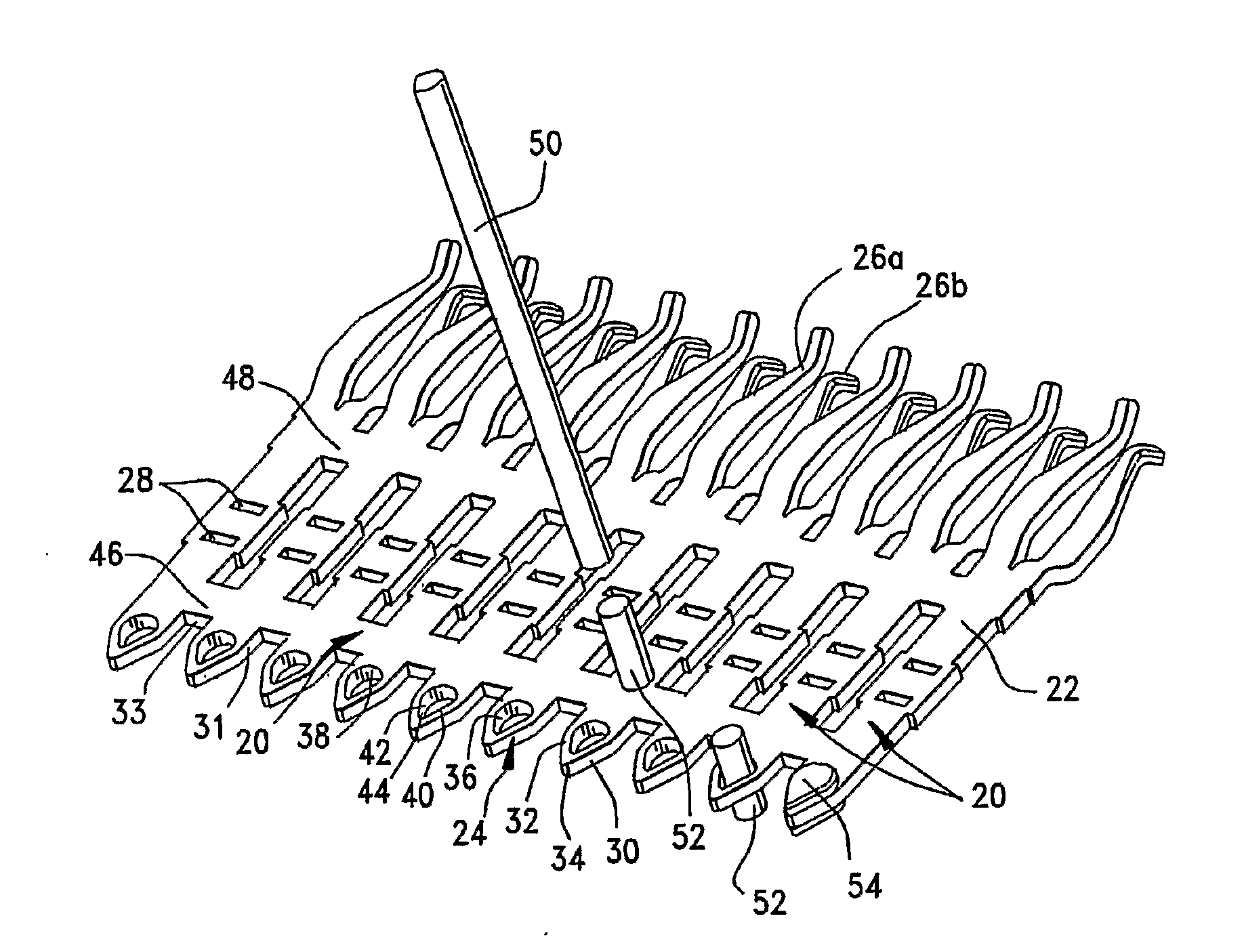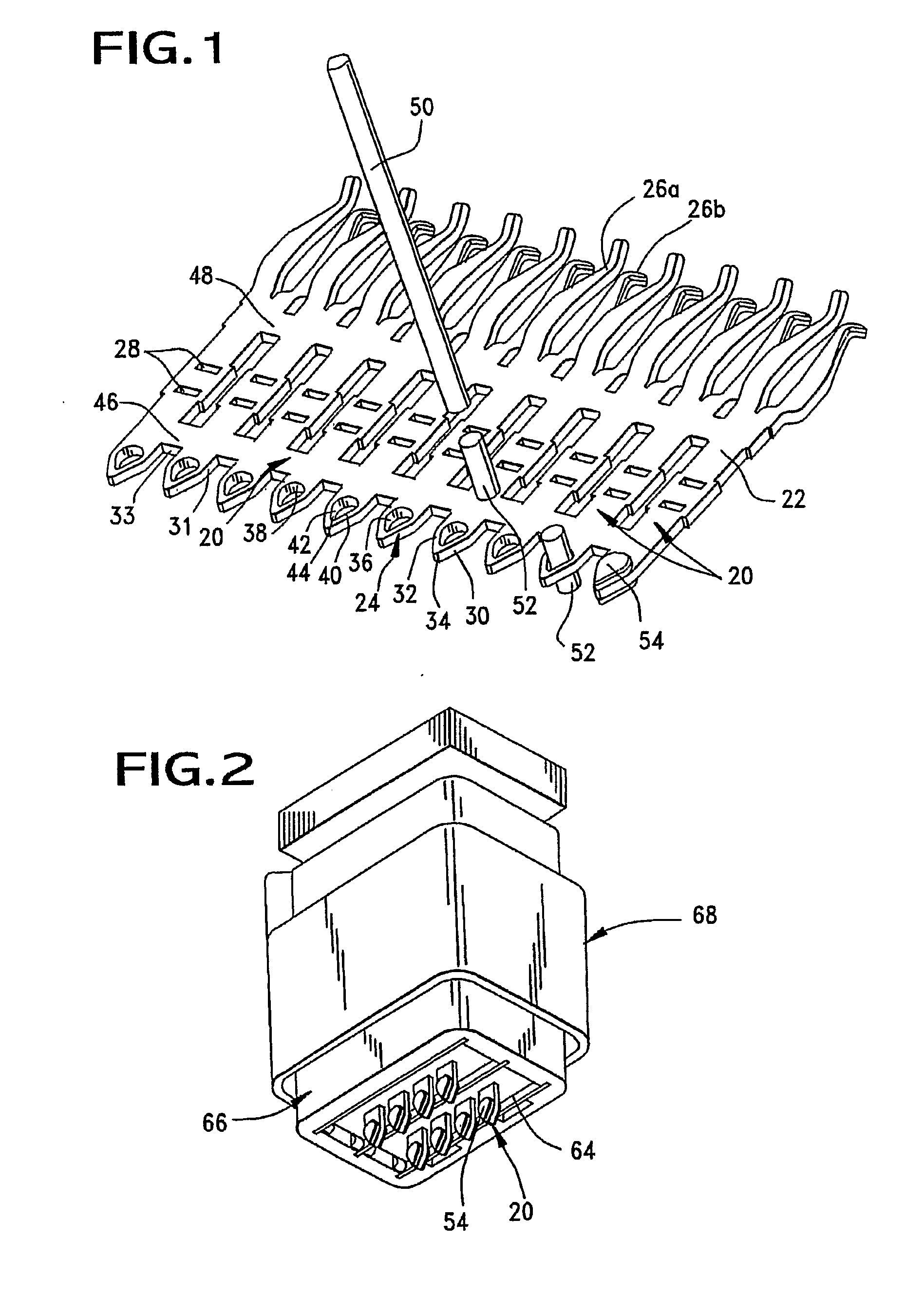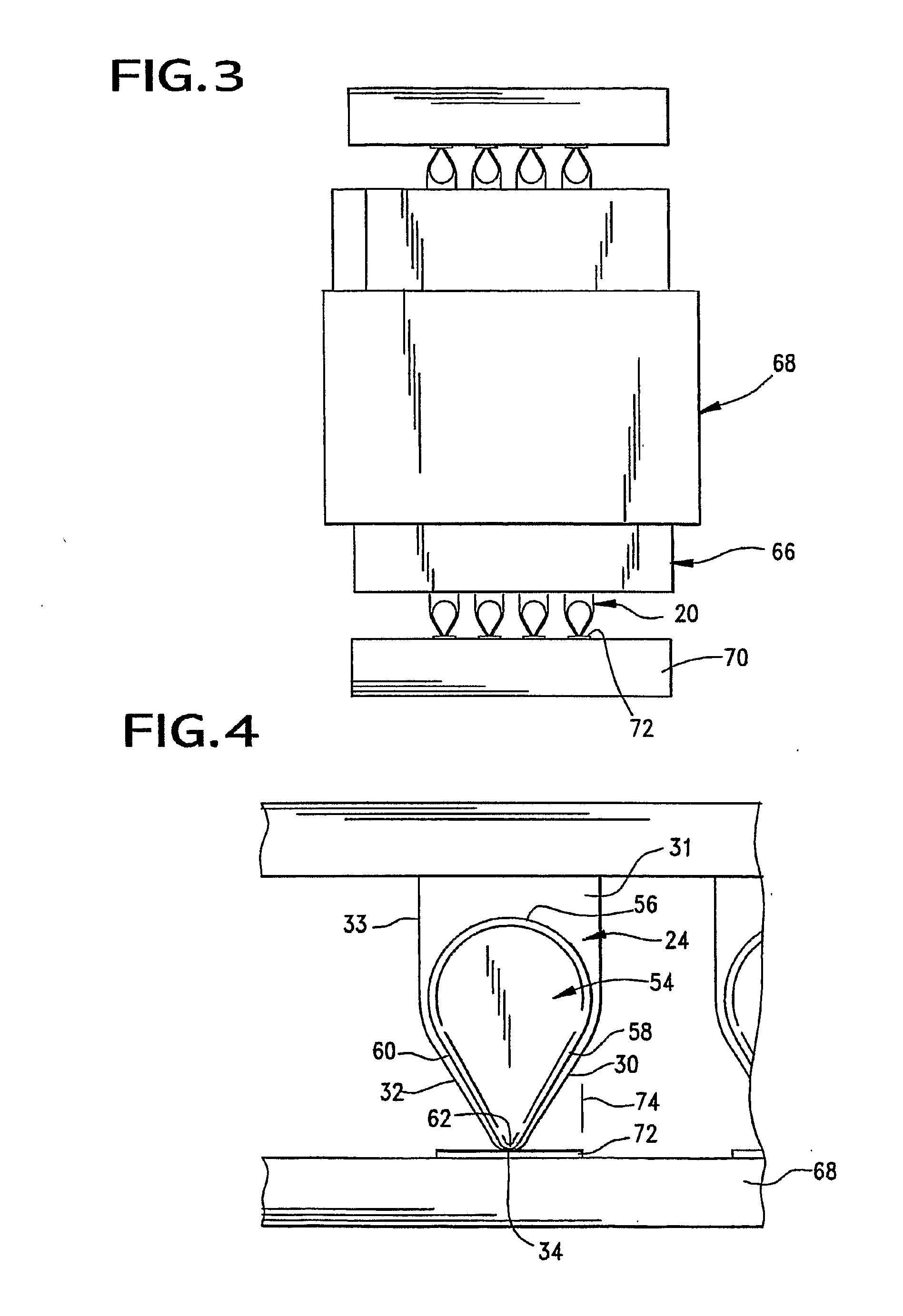Method Of Attaching A Solder Element To Contact And The Contact Assembly Formed Thereby
a technology of contact and solder element, which is applied in the direction of soldering apparatus, sustainable manufacturing/processing, final product manufacturing, etc., can solve the problems of difficult maintenance of the co-planarity of the ball grid array with the conductive pads on the printed wiring board, and the difficulty of assembly of the solder ball
- Summary
- Abstract
- Description
- Claims
- Application Information
AI Technical Summary
Problems solved by technology
Method used
Image
Examples
first embodiment
[0034]Attention is now invited to the invention shown in FIGS. 1-6.
[0035]Initially, a sheet of conductive material (not shown) is provided. A continuous strip of contacts 20 is formed out of the sheet material by conventional means, such as stamping and forming the contacts 20 out of the sheet. Each contact 20 includes generally rectangular body 22 having a tail 24 at first end thereof and a pair of mating contacts 26a, 26b at the second end thereof. The body 22 has a pair of apertures 28 therethrough for attachment of the respective contact 20 to a wafer. The tail 24 of each contact 20 is generally shaped like a “tear-drop”. The tail 24 includes straight sides 31, 33 which are parallel to the sides of the body 22 and sides 30, 32 that extend therefrom and taper inwardly to a rounded point 34. An aperture 36 is provided through the tail 24. The aperture 36 is generally shaped like a “tear-drop” such that the base 38 of the aperture 36 is round and the sides 40, 42 of the aperture 36...
second embodiment
[0045]Attention is now invited to the invention shown in FIGS. 7-13.
[0046]Initially, a sheet of conductive material (not shown) is provided. A continuous strip of contacts 120 is formed out of the sheet material by conventional means, such as stamping the contacts 120 out of the sheet. Each contact 120 includes a generally rectangular body 122 having a tail 124 at first end thereof and a mating contact 126 at the second end thereof. While a male contact 120 is shown in the second embodiment, it is to be understood that a female contact can be formed by forming an appropriate female mating contact. The body 122 has an aperture 128 therethrough for attachment of the respective contact 120 to a wafer 164. The tail 124 of each contact 120 is generally shaped like a “wolf head”. The tail 120 has straight side edges 131, 133 which are parallel to the side edges of the rectangular body 122. A bottom edge has generally flat end sections 130, 132 with a curved intermediate section 134 thereb...
sixth embodiment
[0079]Attention is now invited to the invention shown in FIGS. 20-23.
[0080]Initially, a sheet of conductive material (not shown) is provided. A continuous strip of contacts 520 is formed out of the sheet material by conventional means, such as stamping and forming the contacts 520 out of the sheet. Each contact 520 includes generally rectangular body 522 having a tail 524 at first end thereof and a mating contact 526 at the second end thereof. The body 522 has a pair of apertures 528 therethrough for attachment of the respective contact 520 to a wafer. The tail 524 of each contact 520 is generally rounded. The tail 524 includes straight sides 531, 533 which are parallel to the sides of the body 522 and a rounded end 534. An aperture 536 is provided through the tail 524. The aperture 536 is generally round, but other shapes may be provided. The mating contact 526 is conventional and allow for a mating contact (not shown) to be inserted therebetween. While a male contact 520 is shown ...
PUM
| Property | Measurement | Unit |
|---|---|---|
| shape | aaaaa | aaaaa |
| conductive | aaaaa | aaaaa |
| shapes | aaaaa | aaaaa |
Abstract
Description
Claims
Application Information
 Login to View More
Login to View More - R&D
- Intellectual Property
- Life Sciences
- Materials
- Tech Scout
- Unparalleled Data Quality
- Higher Quality Content
- 60% Fewer Hallucinations
Browse by: Latest US Patents, China's latest patents, Technical Efficacy Thesaurus, Application Domain, Technology Topic, Popular Technical Reports.
© 2025 PatSnap. All rights reserved.Legal|Privacy policy|Modern Slavery Act Transparency Statement|Sitemap|About US| Contact US: help@patsnap.com



